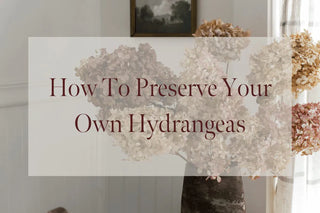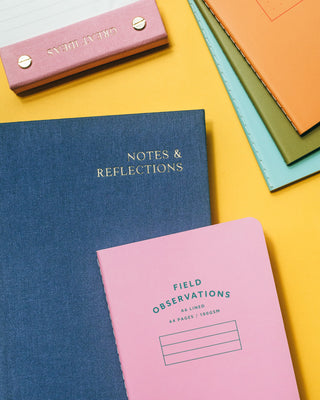Our Obsession with Dried Flowers & Pressed Petals

You might have noticed our new obsession with pressed petals and dried flowers. Well, it’s not just us; anyone who follows design trends knows that flower arrangements are a signature staple of a well-styled room, and that adding a pressed flower to a wax seal can elevate any wedding invitation. Zetta Florence designs have long been inspired by the elegance of flowers and plants, with botanicals featuring on our cards, decorative paper, textiles and more. In recent months, however, our appreciation of flowers has really blossomed.
So why are we so excited about dried flowers? Apart from being absolutely gorgeous, dried flowers are:
- Incredibly versatile
- Long-lasting
- Low maintenance
- Cost-effective
- More environmentally friendly
Dried flowers can provide a warm and colourful touch to your home, which is particularly important as we move into the colder seasons, where there are not as many naturally grown fresh botanicals available. Due to the more sustainable nature of dried flowers, it’s no wonder people are moving away from fresh flower arrangements and towards dried botanicals.
Along with adding a burst of colour to your room, dried flowers and petals have many other practical and creative uses. They can be woven into a wedding bouquet or wreath, used as the finishing touch to an invitation, or cast in resin for jewellery. The possibilities are endless if you think outside the vase.
One of the best and most stunning flowers to preserve is the hydrangea which offers rich colours and is bursting with texture.

Here, we take you through a step-by-step tutorial on how to dry and preserve your own Hydrangeas. The secret is, it’s actually very easy!!
What you will need
- Hydrangea Flowers
- Secateurs or pruning scissors
- Vase or jars
- Water
Method
Step 1. Harvest
Harvest your hydrangeas towards the end of their season in summer/autumn when the larger petals are starting to change colour and develop a papery feel and the tiny flowers are just beginning to open. The colour of your hydrangeas will also depend on the time you harvest them, and their growing conditions. If using store-bought fresh hydrangeas, be sure to pick a fresh bunch where the flowers are open, but the stems are not floppy.
Cut the stems so that they are roughly 12 to 18 inches long or 30 to 40 cm. Make sure to use sharp pruning scissors or secateurs to get a clean cut. For best results, cut the stems at an angle to maximise the surface area so they can draw more water. Prune all the leaves from the stem.
Step 2. The Water Method
Fill a vase roughly halfway with water for your hydrangeas. Be mindful not to overstuff your vase with stems, as hydrangeas dry best when given room to “breathe.” If you are drying multiple flowers a good idea is to collect old passata jars and use them as vases with one or two stems in each.
You can dry your hydrangeas without water by hanging them upside down, however, we recommend the water method as it helps to maintain the flower’s colour.
Step 3. Evaporation
Place your hydrangeas in a cool, dry place out of direct sunlight. Leave the flowers for around two to three weeks or until the water has completely evaporated from the vase. At this point, your hydrangeas should feel dry to the touch and the stems should snap off easily. If there is any mold or soggy bits on the stems we suggest cutting them off to the point where the stems are dry and leaving your hydrangeas for a further two to three days.
Step 4. Decorate
Once the stems are completely dry and the petals have a papery texture, your hydrangeas are ready to use! They’re beautiful by themselves in a vase or woven into other dried floral arrangements or wreaths. If using them for craft purposes, you can pick the flower heads from the stems and add to wax seals, cast in resin or frame.
How to store your Preserved Hydrangeas?
One of the benefits of dried flowers is that they require little maintenance, however, here are some tricks to keeping them in perfect condition for longer:
- As with everything else on display in your house, dried flowers will become dusty. A delicate feather duster can usually be used on them without causing any damage.
- Try to keep your flowers away from direct sunlight as it can cause the colour to fade and the petals to become more brittle
- If you are going to store your dried flowers, wrap them in newspaper to prevent them from drawing in moisture from the air. Then place the wrapped flowers in a box so they don’t get accidentally crushed.
If you don’t have the time (or patience) to dry your own flowers, we have a treat for you! Zetta is now stocking its very own dried flower bar. The benefits of buying professionally dried flowers mean they last longer and are less brittle. Our flowers go through a process that removes the sap and replaces it with naturally occurring glycerine and dyes which keep the leaves soft and supple, and the colour bright and fresh-looking.


